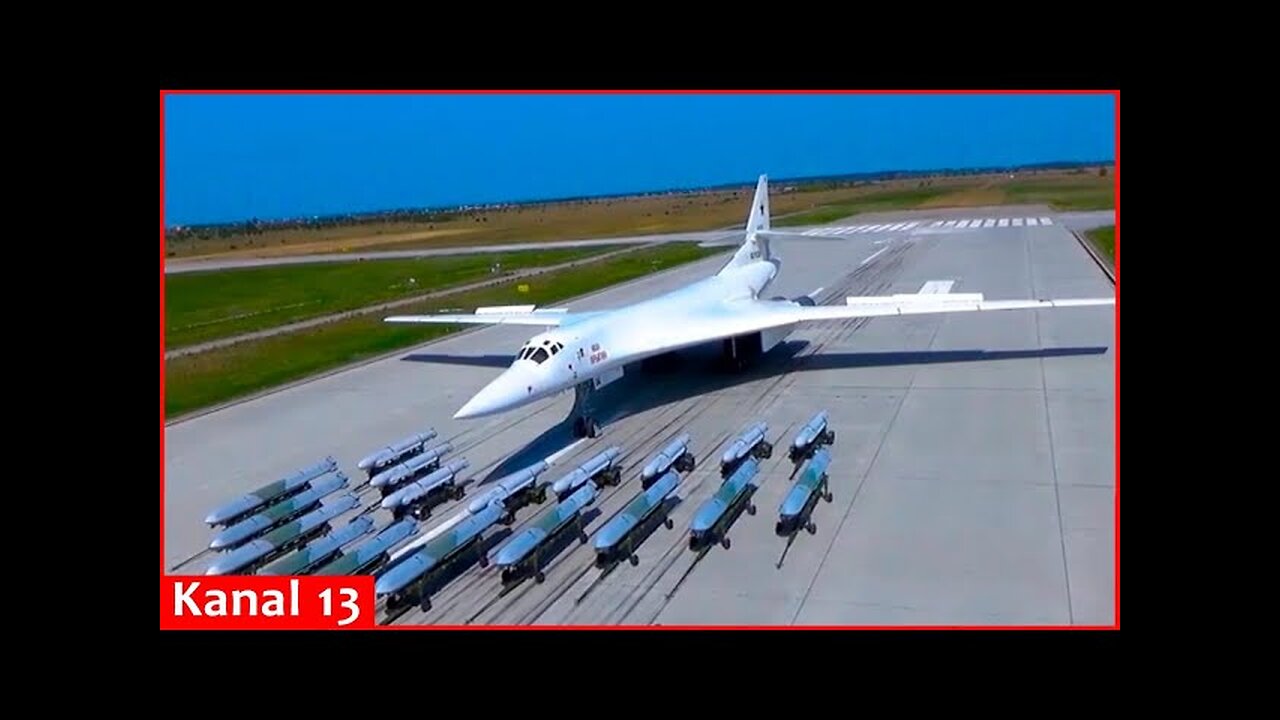Premium Only Content

Russia started production of Kh-101 with two warheads, making the missile twice as dangerous
Ukrainian air defense shot down a modified Russian Kh-101 cruise missile, which had a tandem warhead. The modified version received an additional warhead, doubling its total equivalent from 450 kilograms to about 800 kilograms. The second warhead includes cubic-shaped steel fragments to increase combat efficiency.
It is likely that the additional space for the extra warhead was created by reducing the volume of the fuel tank.
This is likely to affect the range of the cruise missile, but given the territory of Ukraine, the decrease in range is not critical.
According to Defence Express, the installation of an additional warhead, in addition to the usual fragmentation-high-explosive one, occurred due to the reduction in the size of the fuel tank. What this means is a reduction in the flight range of the Kh-101, from 5500 km to a hypothetical 2250 km, which doesn't have much significance. In case of launching such missiles from the Saratov region, even targeting objects in the Lviv region, the Kh-101 will still have 500-700 km remaining for additional maneuvers.
As for the mechanism of releasing the warhead of the missile, which is used in the new version of the Kh-101, it is currently unknown.
Kh-101 is a strategic cruise missile developed with radar cross-section reduction technology. A missile with a special nuclear warhead has a Kh-102 index. It has been developed since 1995, and was adopted in 2013. The carrier of the missile is a Tu-95MSM turboprop strategic bomber and Tu-160. The missile uses a combined inertial guidance system with optical-electronic adjustment, with the homing head activated at the final stages of flight.
In the transport position, the engine is a turbojet dual-circuit, the R95TM-300 models are located inside, the wings are folded under the missile, and the tail is also folded.
After starting, the engine extends out of the body, and the tail decomposes.
-
 2:16:49
2:16:49
TheSaltyCracker
6 hours agoMusk Destroys Gov't Money Pot ReeEEeE Stream 02-05-25
130K217 -
 1:10:59
1:10:59
FreshandFit
6 hours agoTop 3 Ways To Overcome A Break Up
60.1K6 -
 6:32:11
6:32:11
Akademiks
7 hours agoDrake Finally CUTS off FAKE FRIENDS in the Industry. VIOLATES KHALED, LEBRON! Announces album Feb14
60.5K11 -
 27:28
27:28
Glenn Greenwald
10 hours agoGlenn Reacts to Trump's Gaza Take Over: System Update Special
166K273 -
 2:13:49
2:13:49
Melonie Mac
6 hours agoGo Boom Live Ep 36!
86.8K10 -
 1:02:11
1:02:11
Sarah Westall
7 hours agoFreezing USAID & its Operations in Ukraine: A Massive Money Laundering Organization? w/ Sam Anthony
80.2K16 -
 2:05:35
2:05:35
Space Ice
10 hours agoSpace Ice & Redeye: Neil Breen's Pass Thru
31.7K1 -
 1:00:23
1:00:23
The StoneZONE with Roger Stone
6 hours agoRoger Stone Talks Trump’s Electric First 100 Day Agenda | The StoneZone w/ Roger Stone
36.8K8 -
 DVR
DVR
Redacted News
10 hours agoBREAKING! EPSTEIN LIST INCOMING UNDER AG PAM BONDI? DEMOCRATS FREAKING OUT, PRINCE ANDREW NERVOUS
184K255 -
 52:02
52:02
Candace Show Podcast
12 hours agoBecoming Brigitte: An Inaccessible Past | Ep 2
171K258